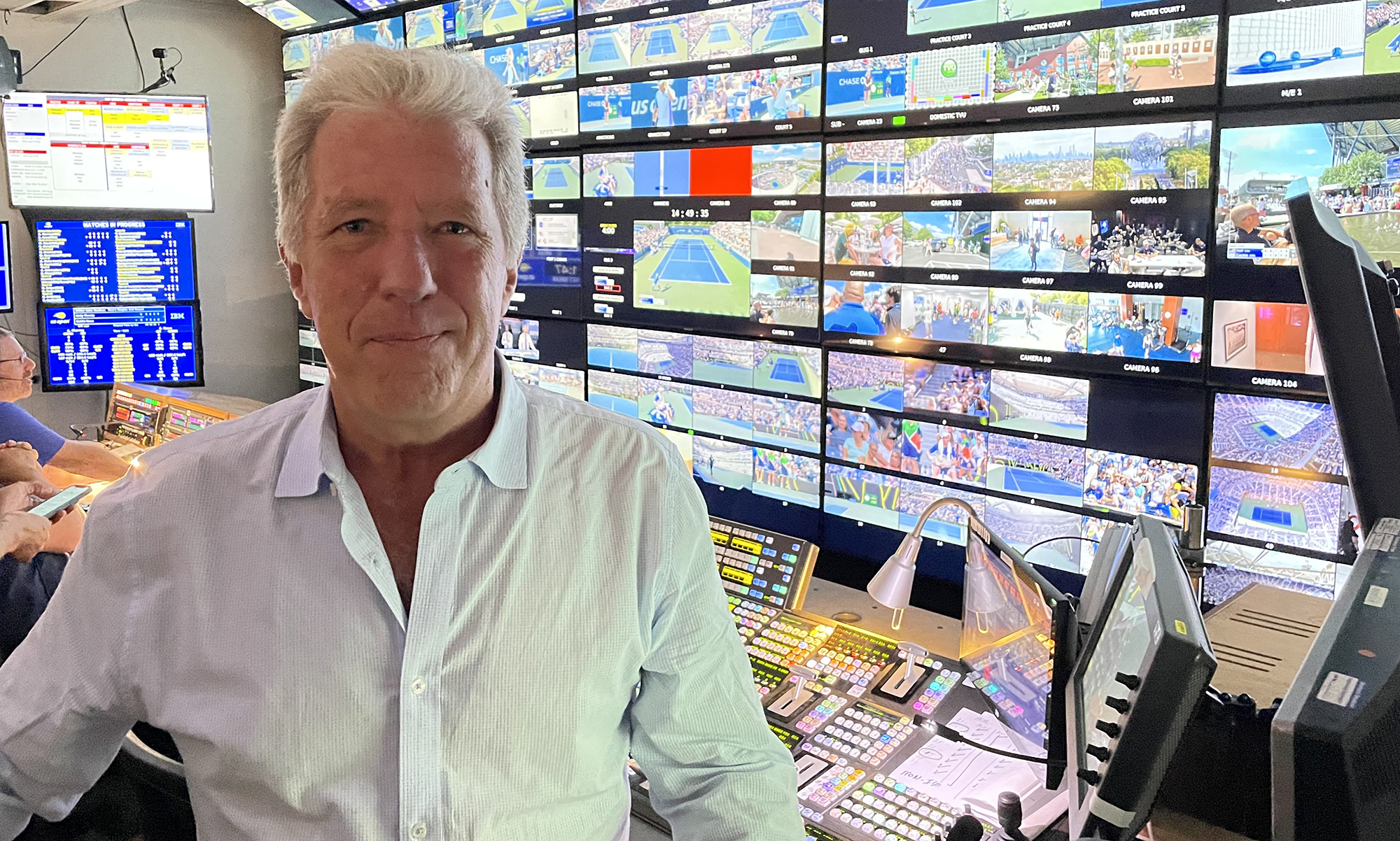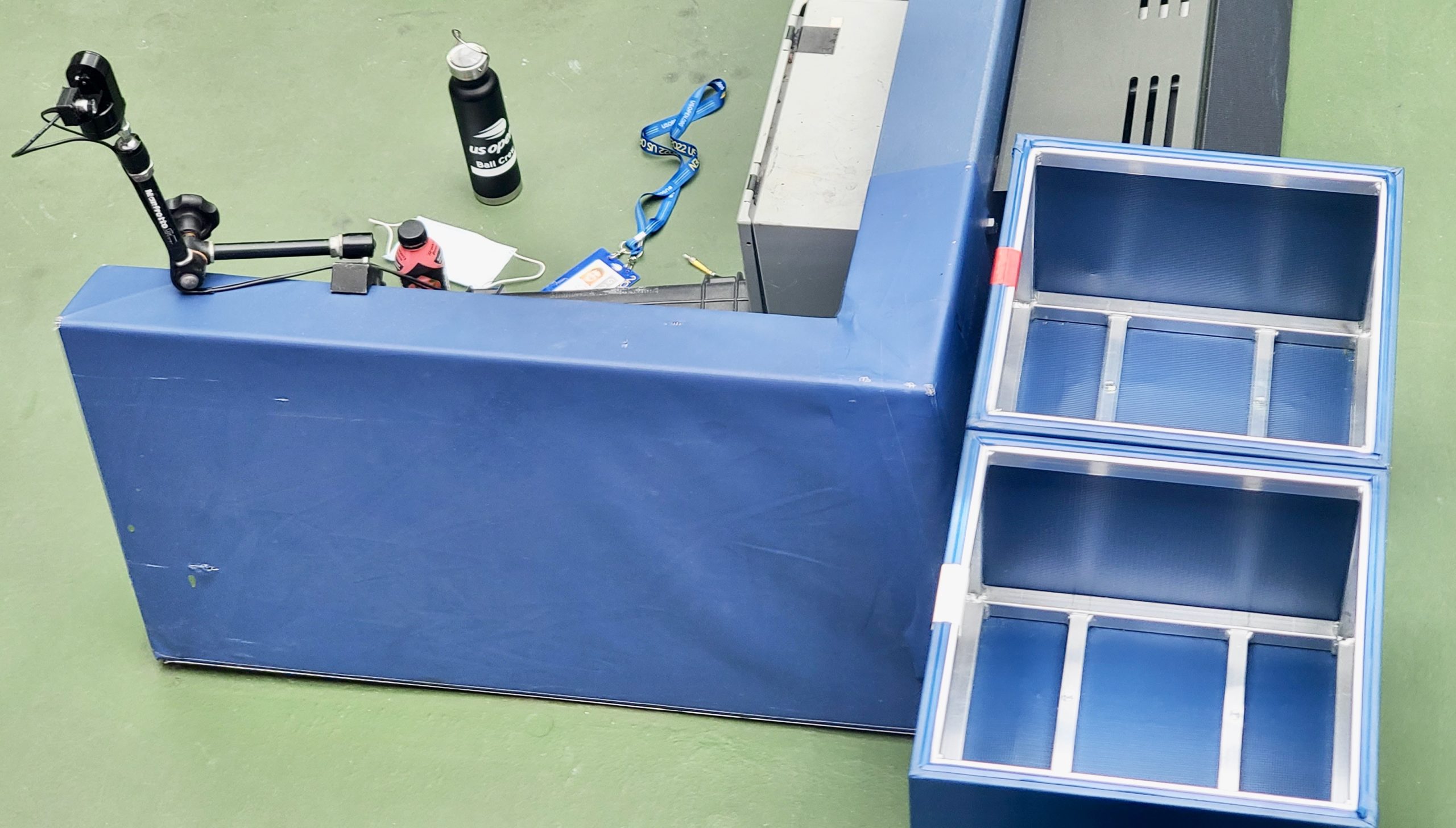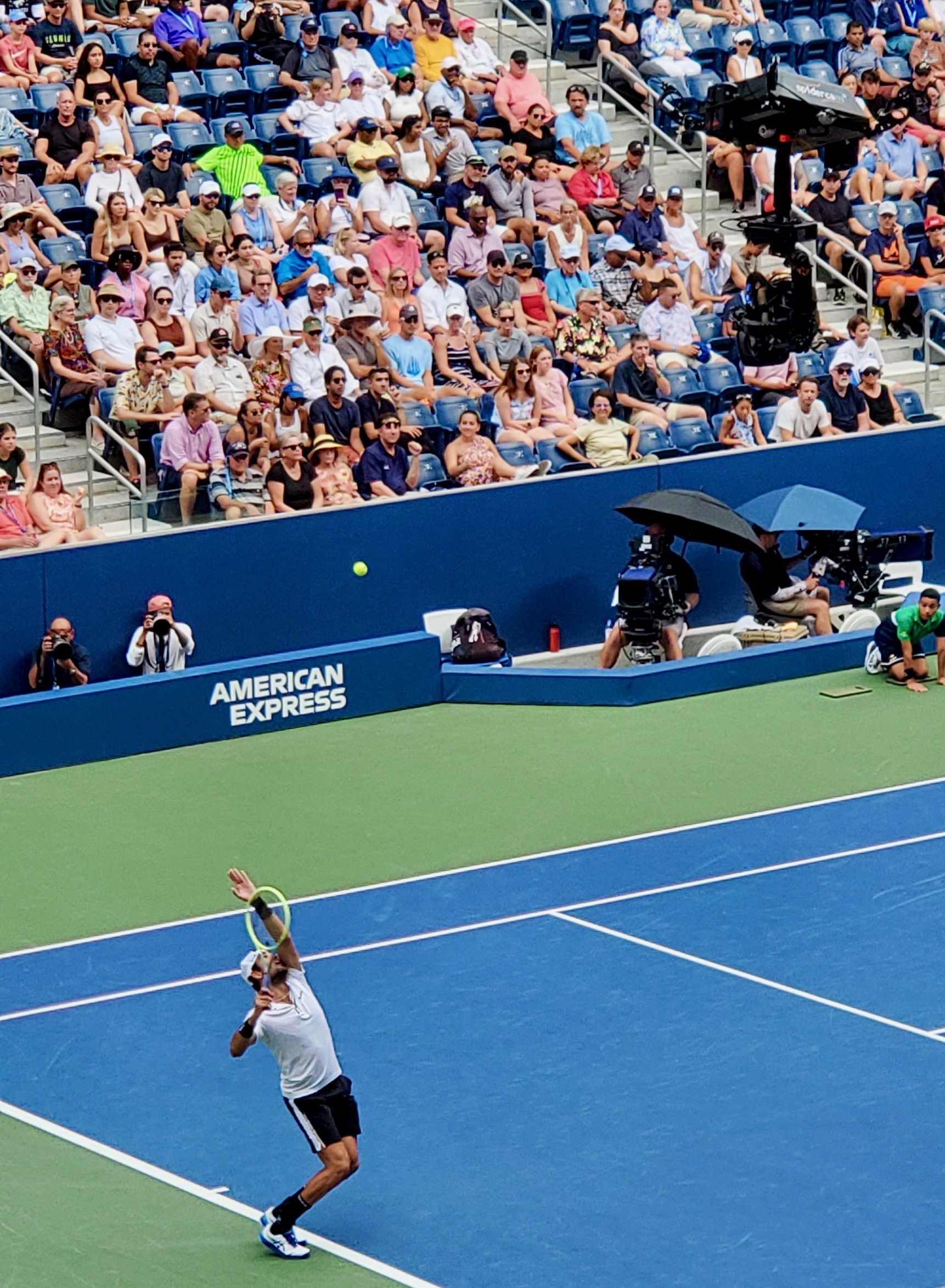Live From US Open 2022: ESPN’s Jamie Reynolds on New Camera Angles, More Player Access, and Serena’s Impact on Production Strategy
Looking at both past and present, the first week is ‘all about the emotion’
Story Highlights
There aren’t many people on the planet with more experienc producing tennis Grand Slams than ESPN’s VP of Production Jamie Reynolds, so he knows a thing or two about a good storyline. And it simply doesn’t get much better than Serena Williams’ farewell tour this week at the US Open in Flushing Meadows. SVG sat down with Reynolds this week to discuss how this reward from “the tennis gods” is impacting ESPN’s production strategy at the Open, new camera angles (including the “towel cam”) and audio features (mic’ed up coaches), and how record attendance at the USTA Billie Jean King Tennis Center has brought renewed energy to ESPN’s broadcasts.
How much has Serena Williams’s announcement that this will likely be her final event affected your production strategy and changed the way you’re covering this year’s Open?
Even before Serena’s announcement, we had committed to a dual-network approach on ESPN and ESPN2 for the first round of coverage. In primetime, ESPN was to be the Ashe channel; on ESPN2, we were going to run Armstrong Stadium plus all the outer-courts action. That was a commitment to the USTA to celebrate the return of tennis and the excitement that was going to be here.

Serena’s announcement of a farewell tour here [at the US Open] and what it meant to have her own opening night changed the entire dynamic. We lovingly said the tennis gods showered us with a reward for our commitment to the sport over the years.
I have to admit that, on that opening night, there was a little bit of trepidation because everyone was nervous to see how Serena would compete. Would this be her last match ever on Ashe? Or would she be successful, and [it would] be the first chapter of a longer celebration of her career? We were walking a fine line between whether we were watching her last performance at Ashe Stadium or [seeing] the incomparable Serena we’ve all come to know. It turned out to be the latter. She showed up and, with a great deal of fearlessness and guts, put in a tremendous performance. To the benefit of the US Open, this is a wave that is going to build all week and potentially into next week.
We’ve seen a few fun new on-court camera angles, such as the mini “towel cam” that shows the player’s face as they walk to the towel bin. What do these types of angles add to the broadcast?
We’ve been challenged by the USTA to deliver the sport at a premium level that takes advantage of unique technology assets and camera angles that can set these telecasts apart from the Australian Open, French Open, or Wimbledon. The USTA has been very progressive in allowing us to push the technology, as long as it doesn’t infringe on the field of play or become a distraction.
We’ve been creative in finding new angles and the technologies that give us more access. A lot of our [manned] cameras on the field of play have been pushed outside closer to the spectator rim, but we’ve found smaller robotics or specialty cameras that allow us to get even closer to the field of play and get angles you wouldn’t necessarily see. And the USTA has been very supportive of those initiatives.

A new addition to US Open coverage has been the “towel cam,” a miniature camera mounted a few feet behind each towel bin at Arthur Ashe Stadium.
[The towel cam] is one of those specialty shots where you see a player in their own personal quiet moment. Typically, [when] a player heads to a towel box, you’re looking at them from behind or from a side angle. Now you’ve got a visceral shot of what their face looks like: if they’re intense, centering themselves, or silently turning into a presentation of confidence.
That’s on the video side. How are you looking to offer more “access to viewers” on the audio side this year?
With the USTA, we’ve been very progressive in finding new ways to gain access to player boxes. We have always had player-box cameras and audio, but now we have the ability to invite coaches to wear microphones during competition. Some have said yes, while others said they prefer not to. Our goal is to be able to take advantage of that first-person voice of the coach. For offering a more intimate view of the experience, that’s a big win for us. We were able to have [coaches mics] during qualifiers, and those wireless microphone systems are available on Ashe and Armstrong for coaches that elect to wear them.
After a couple of years away, the second Spidercam is back at Armstrong Stadium. How does the way that four-point cable system is used differ from the one used at Ashe?
There are a lot of nuances because they’re very different venues. You have different flight angles, and, because of the steepness and structural integrity, [the way] those systems fly. They have different approaches, different lines of sight, different altitudes. It’s easier to fly around the bowl of Ashe than it is in the box of Armstrong. It’s a little steeper angle in Armstrong than it may be at Ashe. But it does add a larger scope to the Armstrong [broadcasts] that we think is a real difference-maker.
Last year, ESPN expanded its ACES automated production system to all 14 outer courts, and that has continued this year. What has been your opinion of the outer-court coverage so far?
That’s all about scale and volume. The technology is at a point where we were able to scale it up to more courts than ever, and that gives us an opportunity to celebrate the event. We’re getting smarter about the deployment of these systems, and we’re getting better at enhancing what the automated system can deliver. The audio continues to improve. Now we’ve got cooperation from the competition-management team to keep ball kids and referees out of the way, so we have great sightlines. Our goal is to ensure that the presentation is [as good] on Court 4 as it is at 17, as it is at Grandstand, as it is at Ashe and Armstrong.
How have your onsite studio shows continued to evolve this year? What new features are you incorporating into shoulder programming between matches?
Everything we do [onsite] has always been driven by player access and providing the viewer a connection every moment. The beauty of being at these majors is that we have this convergence of our [on-air] talent with the players and fans to celebrate what a Grand Slam represents.
The practice-court pavilion is a great enhancement. You’ve got five practice courts, you’ve got coaches, you’ve got a dynamic group of players creating a brilliant energy. We feel like we’re in the moment.
We also have access to the Fountain Plaza. It’s a wonderful experience to see 23,000 people trying to come in at Ashe at twilight. It’s a beautiful scene of anticipation and being engaged with what that energy is all about.
We also have a traveling desk this year, which is effectively an opportunity pre-match or between matches in the evening sessions to get back inside the arena. We’re trying to be more versatile and dynamic in our locations as it has become easier to gain access amongst the fans, players, and community with some of the [COVID] protocols being relaxed.
How much of a challenge is it to balance the overwhelming Serena storyline with all the other fascinating stories taking place throughout the tournament?
It’s tough, but it’s certainly a good problem to have. Serena is clearly the most prominent and important [storyline] because we realize that we are witnessing history. But we’re also looking to celebrate the new guard of players coming through, all the great competition, and some of the inspiring stories around the grounds. Andy Murray is off to a great start, Coco Gauff is very much in the mix, Rafa has returned at full strength, and there are lots [of others]. There are many good stories throughout this first week, and we’re doing our best to make sure we’re there at every moment, while also recognizing what Serena means to tennis and the entire sports world.
We’ve already seen record attendance at the Open after fans were banned in 2020 and attendance was down in 2021 compared with 2019. How does having fans back in full force change the tone and energy of ESPN’s coverage?
There’s definitely a lot of energy; you can feel it right when you get onsite. Our hope is that the commitment that we’ve made in terms of specialty cameras and enhanced audio will provide a visceral attachment to the atmosphere for fans watching at home. We want to be smart and dynamic so we can serve as the window for the shared experience of the fans and athletes here at the US Open.
We often say this is presenting itself, we just have to get out of the way and make sure we’re smart about taking the viewer everywhere they need to be around the grounds in the moment. We want to amplify the intimacy and importance of this individual sport while a massive group of people either inside the arena or outside on the grounds watches in unison. Yep. It’s a delicate balance of sharing the overall experience, not just what’s going on within the rectangle of the court.
With the middle weekend in sight, how do you feel that ESPN’s broadcasts have gone so far? What do you expect next week?
Fortunately, in this initial week with all the exuberance for opening night and the Serena story, we’ve got a lot of specialty ingredients or technical assets that we haven’t taken advantage of because this is very much an emotional experience. It’s not necessarily about analytical performance. Right now, our hope is to focus on the drama and on the appreciation of what Serena means to the sport and to this event specifically. There will be plenty of time for a more analytical coverage scheme, but, for these first few days, it’s all about the emotion.

